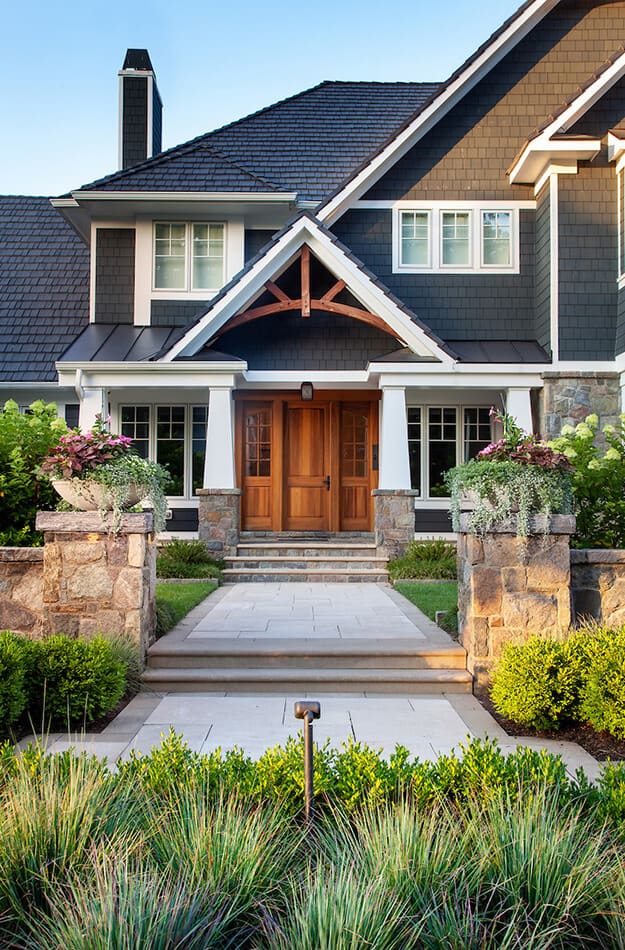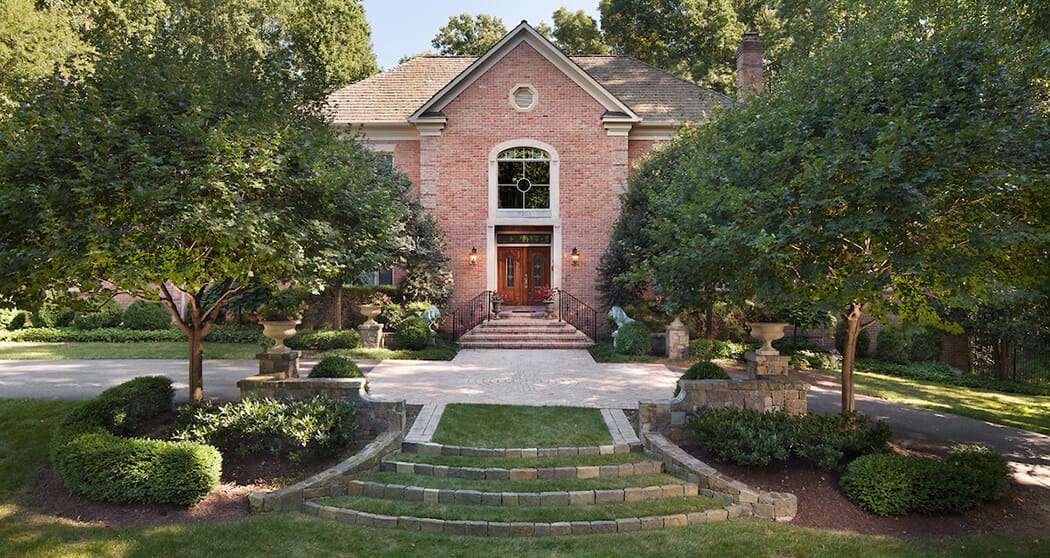
If you are thinking about taking the leap and investing in front yard landscaping, you’ll want to consider all the angles to be sure you don’t overlook anything that might make your project fall short of your expectations. It is essential to take an inventory of all the functional and aesthetic characteristics that will form the foundation of your front yard landscape design.
Essential points to consider when planning a front yard makeover
Considering these basic points will help you to organize the front yard area in a way that maximizes both functionality and visual appeal:
- The architectural style of the home. Landscape style should harmonize with the home style.
- Privacy. How much privacy screening do you require on the street side of your home?
- Functional Design. Access and ease of movement through the landscape. How would you like to organize the flow pattern for vehicles and pedestrians?
Take Landscape Design Cues From the Architectural Style of the Home
The landscape design should reflect the lines of the house and the colors/textures of the materials used in its construction. A landscape architect will make sure that the style of plantings and plant selections refer to the architectural style of the home to more or less degree.
How do landscape architects do this? They look for clues. They notice whether the form of the house is symmetrical or asymmetrical, whether the materials of the house are simple, understated, and clean, or whether they are rich, varied, and dramatic. All of these characteristics exist on a continuum with contemporary style on one side and traditional at the other.

For a modern minimalist style home, for example, the design might include ornamental grasses and perennials in square and rectangular-shaped beds. The shapes and styles of container plantings would also match the lines of the home architecture. A mid-century modern or contemporary home almost always calls for some version of this minimalism. The big blousy peonies or azaleas typically found around traditional-style homes would not fit well in that scenario.
The more traditional style landscapes will usually feature soft edges and curving beds of boxwood, liriope, and ivy ground covers–the thicker greener types of vegetation. These are the bread and butter basics of tradition and are the expected accompaniment to a brick house with divided light windows and a slate roof. They enhance that warm, homey feel of the traditional style.
The difference between the two style categories is a matter of variations on a theme. A landscape architect will select the elements that fit the theme and enhance the given architectural style of the house. But there is no “definitive” modern/contemporary or traditional/formal style.
Begin your project with a dream and a plan!
You are at the threshold of an exciting journey. This eBook will provide sound guidance as you take your first steps.
Decide How Much Front Yard Privacy You Require
A landscape architect will work with you to develop a front yard design that is flattering to your house and shows it to the best advantage. At the same time, you’ll decide whether you require partial or “complete” privacy. A partial privacy effect reveals selective views of the house from different viewpoints at the curb. This is generally achieved by strategically positioning trees and plantings beds to partly obscure direct views into the home.

If you live on a busy street, you may have a greater need for privacy and some buffer from streetside activity. An increased level of privacy requires an added dimension of finesse to ensure your privacy screening isn’t perceived as a blunt barrier and unfriendly to neighbors. In this case, your landscape architect must think in terms of landscape layering. That is, visualizing the front yard in zones: foreground, middle ground, background, and borders.
In the case of privacy planting, that foreground layer, the one nearest the curb, is the most important to get right. The best solution usually comes from implementing a soft barrier or “green wall.” That can take shape, for example, as a medium height stone wall with low planting beds in front and taller shrubs behind. The density of the backing greenery modulates the “neighbor-friendliness” factor. Usually, foreground features that permit obscured views can be combined with middle ground features that entirely block views or direct the eye to selected elements in the landscape. This combination approach allows you to achieve your desired level of front yard privacy without imposing a blunt force barrier wall.
Functional Design: Driveways and Walkways

Functional design serves two purposes: first, to facilitate the day to day comings and goings of you and your family and second, to direct the flow of guests (on special occasions) to the front entry. We designate these as your primary and secondary entrances.
Your primary (every day) entrance and walkway can be as fancy as you like–but that will be mostly for you to enjoy. Typically, you will be investing more time and attention to creating a welcoming impression at the front door entry. A front entry porch might be designed to stand out dramatically for guests and visitors, while your everyday entrance will be most likely focused on convenience.
A related point to consider is the position of your house on the lot. Is it close to the street on a modest-sized lot? Or is it an expansive property with a generous setback? Take care not to overplant and obscure the architectural lines of the home. The height of trees and plantings should be proportionate to the overall area and the depth of the front yard. Your planting plan must anticipate the height and breadth of those plantings at maturity and how that will affect the composition.
Are you thinking about investing in a landscape design project? Our eBook: Expert Guide to Planning the Landscape Design of Your Dreams, is full of valuable information to help you get started.